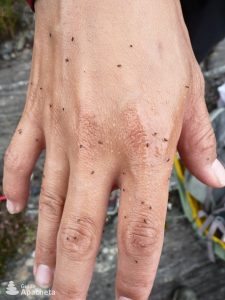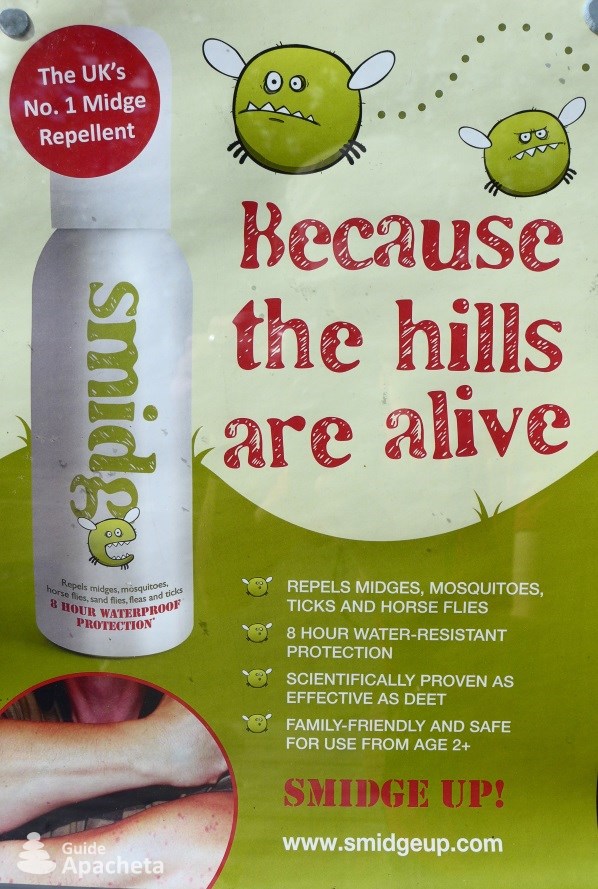Midges, the Highland mosquito in Scotland
What is a midge?

The midge is a mosquito common in the Scottish Highlands that moves in swarms. Despite its small size, 2-3 millimetres in wingspan, it spreads terror. Of the 35 species listed, the “culicoides impunctatus” is the most widespread. They are mainly present in spring and autumn. They can be active all day, but are most active at dawn and dusk. On the other hand, with their small size, they cannot fight the weather. So when it rains or when the wind blows at more than 10 km/h, they remain sheltered. They live mainly in wetlands such as peat bogs. They hide in tall grasses, ferns or in the moss of trees.
The midge does not sting, he bites! And only females bite. They feed on blood in order to store fat for the laying of their eggs. Meanwhile, the males forage for flowers. They are excited by the CO² we exhale, then they spot us by body odour, heat, colours, movements… When one finds you, before starting to bite you, it secretes a pheromone to invite its friends to join the feast. They will bite you for a few minutes while they eat their meal. The bites are almost painless, you only feel a slight tingling sensation. On the other hand, the bite leaves a small redness on the skin that causes itching that lasts for a long time.
How can I protect myself from midges?
One of the most effective repellents is Smidge, available throughout Scotland. It has an 8 hour protection, is water resistant and does not contain DEET (a chemical used as a repellent). The product also repels other insect pests such as mosquitoes, black flies, fleas and ticks. If you are bitten, use an anti-histamine cream to soothe the itch.

The essentials for your trip to Scotland
- A repellent against midges (and other pests)
- An anti-histamine cream
- A head mosquito net
- A ticker-tip
Discover the new guidebook on the Highlands of Scotland.
